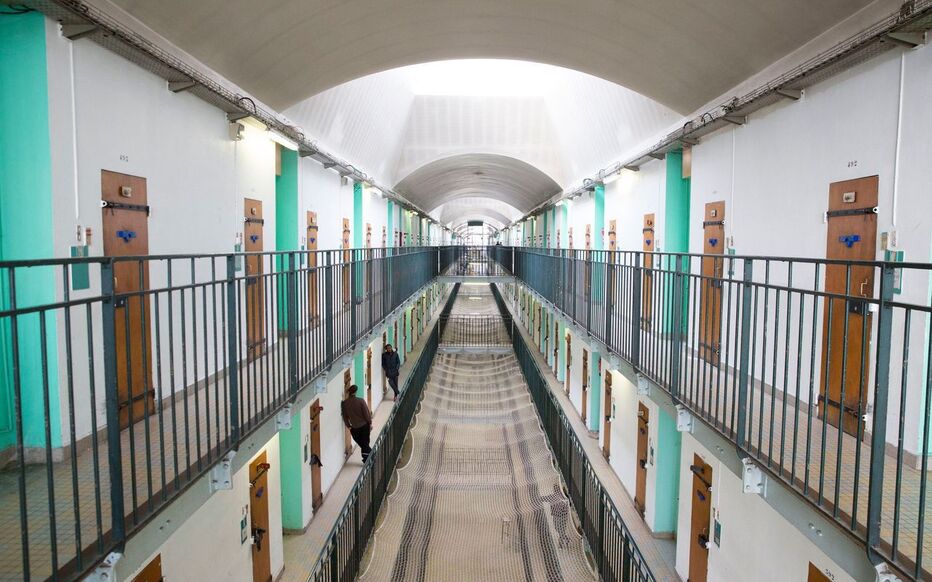1:18 PM The Concept of Total Institutions in Modern Standards of Prison Management | |
In this paper, we present the classical concept of total institutions in a new light, namely through the prism of modern standards of prison management and prisoners' rights. In addition, this paper aims to combine two fundamental concepts of prison – I. Hoffman's concept of total institutions and the concept of prison as a disciplinary mechanism. Therefore, in this paper, the author's approach is to combine the socio-economic analysis of the prison as a disciplinary project with the sociopsychological analysis of the prison, since an isolated study of only one aspect is insufficient to understand the nature of the prison (especially in the XXI century). Based on the results of this study, we have formulated the following conclusions. The conservative (formal) approach to the study of prisons and imprisonment that currently dominates in contemporary legal science should be criticized. The prison appeared as the most democratic criminal punishment, which gave rise to many reform projects in the XIX – XX centuries. However, today, when prison has turned out to be "the most disgusting but non-alternative solution to the problem" (M. Foucault), which should be used as a last resort, there is no in-depth research on the anatomy of prison. Instead of the anatomy of the prison, we have mostly slogans, declarations, contradictory concepts, etc. born in the XX century, but in modern conditions extremely overloaded with skepticism of both scholars and practitioners, not to mention prisoners themselves. The problem with the modern anatomical analysis of prison is that it was created in the early XIX century as a machine to transform rebellious and uncontrollable criminals into submissive and disciplined proletarians. However, today, when few people analyze and use this clearly unfashionable definition as ‘proletarians’, an objective question arises about the modern anatomy of the prison and the actual goals of the prison in the XXI century – precisely in the conditions of the new socio-economic formation. Therefore, the study of the anatomy of the modern prison should be comprehensive and include: 1) the study of the prison as a total institution according to the categorical apparatus shaped by I. Hoffman and other researchers of institutional totality; 2) the study of the prison as an apparatus aimed at spreading discipline in the society and scattering disciplinary networks (O. Kirchheimer, G. Rusche, M. Foucault, D. Melossi, M. Pavarini); 3) the realistic approach formulated by the ECtHR and the CPT to horizontal and vertical relations in modern prisons (issues of human rights standards and their observance, power relations and informal prison hierarchy). Hoffman's concept of total institutions reflects the view of prison and imprisonment formed in the mid-nineteenth and early twentieth centuries. This classical concept is based on the echoes of Philadelphia and Auburn. Nevertheless, the concept of total institutions retains its great relevance today. Moreover, it is today that this concept has acquired special importance and a second life given the reflection of elements of this concept not only in regulations, but also in the practice of the ECtHR and the CPT. In “S.P. and Others”, the ECtHR made a big step forward in analyzing institutional subculture on the example of prisons. The value of this step lies in the fact that while in its previous judgments the ECtHR only disclosed the specifics of the status of vulnerable persons in penitentiary institutions (homosexuals, police informants, sexual offenders, former law enforcement officers, etc.). In “S.P. and Others”, the ECtHR analyzed power relations in total institutions and emphasized that power relations are, in fact, the main thing that should be considered when studying modern prisons. In connection with this and other ECtHR judgements concerning power relations in prisons, the issue of an informal hierarchy of prisoners is even more relevant today. The informal hierarchy of prisoners, which occupies a leading place in the concept of total institutions, has now (see “S.P. and Others”) gained a new perspective as an object of scientific research. It is no longer just a part of a scientific and populist legend; instead, it has become a factual and legal reality. In addition, in “S.P. and Others”, the ECtHR further emphasized the value and relevance of the concept of total institutions in terms of the conflict between the formally declared goals of total institutions and their real goals. We should also mention the importance of the CPT reports for the purposes of studying the modern prison. Thus, being a concentrate of practically oriented knowledge generated from systematic practical surveys of European prisons and other total institutions, the CPT reports contain a critical and independent examination of the anatomy of prisons in terms of horizontal and vertical institutional relations. | |
| Переглядів: 1406 | | |
| Всього коментарів: 0 | |
